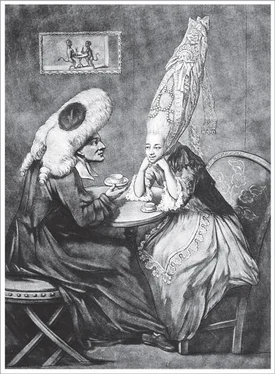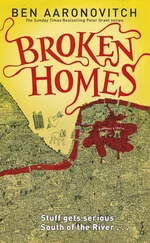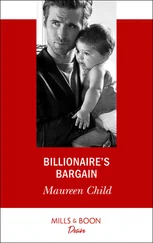Bill Bryson - At Home
Здесь есть возможность читать онлайн «Bill Bryson - At Home» весь текст электронной книги совершенно бесплатно (целиком полную версию без сокращений). В некоторых случаях можно слушать аудио, скачать через торрент в формате fb2 и присутствует краткое содержание. Жанр: Старинная литература, на английском языке. Описание произведения, (предисловие) а так же отзывы посетителей доступны на портале библиотеки ЛибКат.
- Название:At Home
- Автор:
- Жанр:
- Год:неизвестен
- ISBN:нет данных
- Рейтинг книги:4 / 5. Голосов: 1
-
Избранное:Добавить в избранное
- Отзывы:
-
Ваша оценка:
- 80
- 1
- 2
- 3
- 4
- 5
At Home: краткое содержание, описание и аннотация
Предлагаем к чтению аннотацию, описание, краткое содержание или предисловие (зависит от того, что написал сам автор книги «At Home»). Если вы не нашли необходимую информацию о книге — напишите в комментариях, мы постараемся отыскать её.
At Home — читать онлайн бесплатно полную книгу (весь текст) целиком
Ниже представлен текст книги, разбитый по страницам. Система сохранения места последней прочитанной страницы, позволяет с удобством читать онлайн бесплатно книгу «At Home», без необходимости каждый раз заново искать на чём Вы остановились. Поставьте закладку, и сможете в любой момент перейти на страницу, на которой закончили чтение.
Интервал:
Закладка:
In the end, only 18 of 260 men survived the voyage. Magellan himself was killed in a skirmish with natives in the Philippines. The survivors did very well out of the voyage, however. In the Spice Islands they loaded up with fifty-three thousand pounds of cloves, which they sold in Europe for a profit of 2,500 percent, and almost incidentally in the process became the first human beings to circle the globe. The real significance of Magellan’s voyage was not that it was the first to circumnavigate the planet, but that it was the first to realize just how big that planet was.
• • •
Although Columbus had little idea of what he was doing, it was his voyages that ultimately proved the most important, and we can date the moment that that became so with precision. On November 5, 1492, on Cuba, two of his crewmen returned to the ship carrying something no one from their world had ever seen before: “a sort of grain [that the natives] call maiz which was well tasted, bak’d, dry’d and made into flour.” In the same week, they saw some Taino Indians sticking cylinders of smoldering weed in their mouths, drawing smoke into their chests, and pronouncing the exercise satisfying. Columbus took some of this odd product home with him, too.
And so began the process known to anthropologists as the Columbian Exchange—the transfer of foods and other materials from the New World to the Old World and vice versa. By the time the first Europeans arrived in the New World, farmers there were harvesting more than a hundred kinds of edible plants—potatoes, tomatoes, sunflowers, eggplants, avocados, sweet potatoes, peanuts, cashews, pineapples, papaya, guava, yams, manioc (or cassava), pumpkins, vanilla, a whole slew of beans and squashes, four types of chili peppers, and chocolate, among rather a lot else—not a bad haul.
It has been estimated that 60 percent of all the crops grown in the world today originated in the Americas. These foods weren’t just incorporated into foreign cuisines. They effectively became the foreign cuisines. Imagine Italian food without tomatoes, Greek food without eggplant, Thai and Indonesian foods without peanut sauce, curries without chilies, hamburgers without French fries or ketchup, African food without cassava. There was scarcely a dinner table in the world in any land east or west that wasn’t drastically improved by the foods of the Americas.
No one foresaw this at the time, however. For the Europeans the irony is that the foods they found they mostly didn’t want, while the ones they wanted they didn’t find. Spices were what they were after, and the New World was dismayingly deficient in those, apart from chilies, which were too fiery and startling to be appreciated at first. Many promising New World foods failed to attract any interest at all. The indigenous people of Peru had 150 varieties of potato, and valued them all. An Incan of five hundred years ago would have been able to identify varieties of potato in much the way that a modern wine snob identifies grapes. The Quechuan language of Peru still has a thousand words for different types or conditions of potatoes. Hantha , for instance, describes a potato that is distinctly on the old side but still has edible flesh. The conquistadores, however, brought home only a few varieties, and there are those who say they were by no means the most delicious. Farther north, the Aztecs had a great fondness for amaranth, a cereal that produces a nutritious and tasty grain. It was as popular a foodstuff in Mexico as maize, but the Spanish—offended by the way the Aztecs used it, mixed with blood, in rites involving human sacrifice—refused to touch it.
The Americas, it may be said, gained much from Europe in return. Before the Europeans stormed into their lives, people in Central America had only five domesticated creatures—the turkey, duck, dog, bee, and cochineal insect—and no dairy products. Without European meat and cheese, Mexican food as we know it could not exist. Wheat in Kansas, coffee in Brazil, beef in Argentina, and a great deal more would not be possible.
Less happily, the Columbian Exchange also involved disease. With no immunity to many European diseases, the natives sickened easily and “died in heapes.” One epidemic, probably viral hepatitis, killed an estimated 90 percent of the natives in coastal Massachusetts. A once-mighty tribal group in the region of modern Texas and Arkansas, the Caddo, saw its population fall from an estimated 200,000 to just 1,400—a drop of nearly 96 percent. An equivalent outbreak in modern New York would reduce the population to 56,000—“not enough to fill Yankee Stadium,” in the chilling phrase of Charles C. Mann. Altogether, disease and slaughter reduced the native population of Mesoamerica by an estimated 90 percent in the first century of European contact. In return, the natives gave Columbus’s men syphilis.*
Over time the Columbian Exchange also of course involved the wholesale movement of peoples, the setting up of colonies, and the transfer—sometimes enforced—of language, religion, and culture. Almost no single act in history has more profoundly changed the world than Columbus’s blundering search for eastern spices.
There is another irony in all this. By the time the age of exploration was fully under way, the heyday of spices was coming to an end anyway. In 1545, just twenty years or so after Magellan’s epic voyage, an English warship, the Mary Rose , sank in mysterious circumstances off the English coast near Portsmouth. More than four hundred men died. When the ship was recovered in the late twentieth century, marine archaeologists were surprised to find that almost every sailor owned a tiny bag of black pepper, which he kept attached to his waist. It would have been one of his most prized possessions. The fact that even a common sailor of 1545 could now afford a supply of pepper, however modest, meant that pepper’s days of hyper-rarity were at an end. It was on its way to taking its place alongside salt as a standard and comparatively humble condiment.
People continued to fight over the more exotic spices for another century or so, and sometimes even over the more common ones. In 1599, eighty British merchants, exasperated by the rising cost of pepper, formed the British East India Company with a view to getting a piece of the market for themselves. This was the initiative that brought King James the treasured isles of Puloway and Puloroon, but in fact the British never had much success in the East Indies, and in 1667, in the Treaty of Breda, they ceded all claims to the region to the Dutch in return for a small piece of land of no great significance in North America. The piece of land was called Manhattan.
By now, however, there were new commodities that people wanted even more, and the quest for these was, in the most unexpected ways, about to change the world still further.
II
Two years before his unhappy adventure with “many worms creeping,” Samuel Pepys recorded in his diary a rather more prosaic milestone in his life. On September 25, 1660, he tried a new hot beverage for the first time, recording in his diary: “And afterwards I did send for a cup of tee (a China drink), of which I never had drank before.” Whether he liked it or not Pepys didn’t say, which is a shame, as it is the first mention we have in English of anyone’s drinking a cup of tea.
A century and a half later, in 1812, a Scottish historian named David Macpherson, in a dry piece of work called The History of the European Commerce with India , quoted the tea-drinking passage from Pepys’s diary. That was a very surprising thing to do, because in 1812 Pepys’s diaries were supposedly still unknown. Although they resided in the Bodleian Library in Oxford, and so were available for inspection, no one had ever looked into them—so it was thought—because they were written in a private code that had yet to be deciphered. How Macpherson managed to find and translate the relevant passage in six volumes of dense and secret scribblings, not to mention what gave him the inspiration to look there in the first place, are mysteries that are some distance beyond being answerable.
Читать дальшеИнтервал:
Закладка:
Похожие книги на «At Home»
Представляем Вашему вниманию похожие книги на «At Home» списком для выбора. Мы отобрали схожую по названию и смыслу литературу в надежде предоставить читателям больше вариантов отыскать новые, интересные, ещё непрочитанные произведения.
Обсуждение, отзывы о книге «At Home» и просто собственные мнения читателей. Оставьте ваши комментарии, напишите, что Вы думаете о произведении, его смысле или главных героях. Укажите что конкретно понравилось, а что нет, и почему Вы так считаете.












